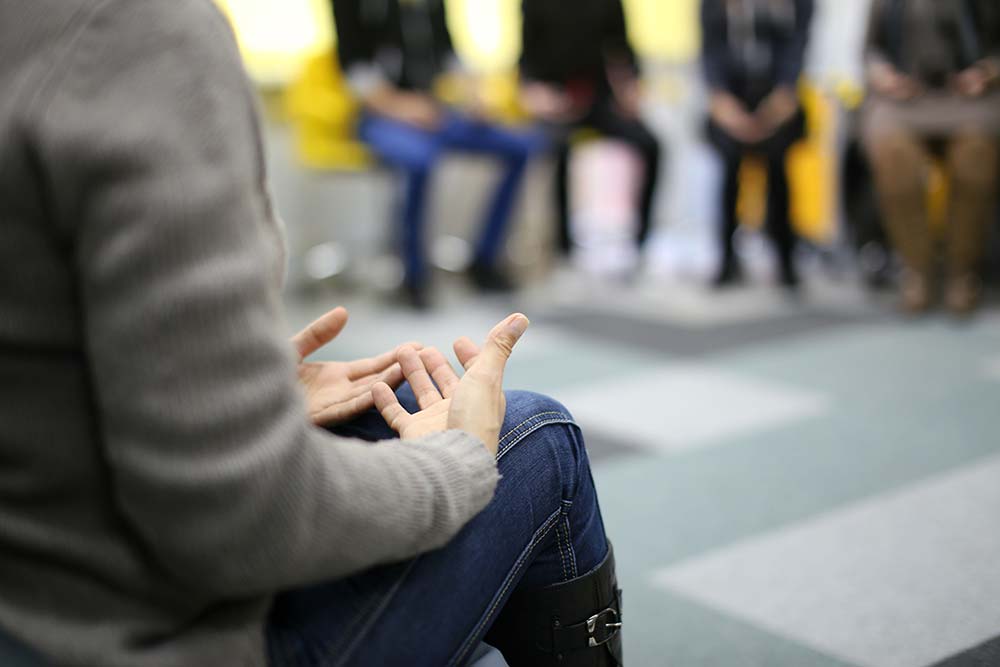Collaborative and
Proactive Solutions
Collaborative and Proactive Solutions (CPS)
Originated by: Ross Greene, PhD
Best-selling author of The Explosive Child

Collaborative and Proactive Solutions (CPS), formerly referred to as Collaborative Problem Solving, is an empirically supported therapeutic approach for youth exhibiting challenging, sometimes even dangerous, behavior. It is a unique approach that deviates from traditional behavioral strategies or disciplinary methods in that it focuses on:
- Listening empathically to the child’s concerns to understand what unsolved problems are contributing to or directly causing the problem behavior;
- Assessing and identify lagging skills is a key task of this model because it views all problem behaviors as a result of lagging skills in the general areas of flexibility, adaptability, emotional regulation, and problem solving. Challenging behaviors occur when the expectations or demands placed on a child exceed the skills they he or she have to respond adaptively; and
- Children are invited to collaborate with the adult in solving the problem so that children are actively involved in the problem-solving process; learning such skills indirectly.
I had often heard colleagues refer to the book, The Explosive Child, and had seen it in multiple psychological reports as recommended reading during my
years as a Clinical Director. I finally purchased it and began to peruse it in an effort to find helpful approaches for my elementary age son who was
struggling dramatically in the public school setting.
I recall the immediate and powerful reaction I had just a few pages in. It was a “gut check” in every sense of the word; resonating with me at a visceral, instinctive level. With the pretty simple concept that Dr. Greene explicated, all of the struggles our family had encountered with our son’s special needs; all of our lived experiences; moments of desperation, concern, hopelessness and consternation came careening into the sharp focus of clarity.
It explained all observations along the way including the power struggle cycle that had always served to only escalate his problem behaviors, emotional
reactivity and difficulties. It explained why restrictions, punishments, coercion, shaming, guilting, and lecturing had only served to increase his distress, lower his self-esteem and intensify his difficulty meeting expectations.
It also explained why the times we had seen him appear to flourish, prosper, meet expectations and even exceed expectations had been those brief glimpses when he was matched with a teacher or aid that took the time to better understand him, listen to him, capitalize on his strengths and implement accommodations and supports individualized to his needs and skill set.
As I went on to formally study and train in CPS; eventually implementing it in residential treatment settings, I was equally struck by its effectiveness across diverse populations of youth and behavioral severity. I recall cases where patients experienced multiple physical restraints, chronic school absences, alienation from peers and caregivers only to resolve the problems contributing to such significant negative consequences in as little as one CPS session. Typically, many additional unsolved problems persisted and had to be addressed but often the problem(s) contributing to the most severe behaviors and corresponding consequences could be resolved in very few meetings.
I obtained my certification in the model several years ago and am currently enrolled in a national training apprenticeship that trains others to deliver the intervention with technical proficiency. Parents and caregivers are taught and coached in the skills to use these interventions independently so that any new problems that emerge can be mediated without the need for formal counseling. I have a true passion for disseminating this model to others because I have seen such clear and undeniable evidence of its effectiveness in my work with children and families.
To learn more about the model I refer to Dr. Greene’s website www.livesinthebalance.org. His website provides a wealth of resources and formats for better understanding and utilizing the model.
Read Dr. Greene’s detailed explanation outlined in an FAQ format: https://livesinthebalance.org/sites/default/files/FAQ%20060417.pdf
Lives in the Balance is the non-profit organization founded by child psychologist Dr. Ross Greene, originator of the empirically supported Collaborative & Proactive Solutions (CPS) approach and New York Times bestselling author of the influential books The Explosive Child, Lost at School, Lost & Found, and Raising Human Beings.
Our vision is to foster collaboration and empathy, transform lives, and inspire change for all children (especially the most vulnerable), to heighten awareness of the detrimental and counterproductive effects of punitive interventions, and to address the systemic issues that impede our progress.
The mission of Lives in the Balance is to provide vital, accessible resources and programs to caregivers of behaviorally challenging kids; to bring the plight of these kids into the public consciousness; to address the systemic issues that cause many of these kids to slip through the cracks; and to promote parenting and disciplinary practices that foster the better side of human nature in all children. Our efforts are organized around the following initiatives:
Open Access: Through our Outreach initiatives — which include this website, our radio programs and Facebook groups, and our annual Summit — we ensure that parents, educators, mental health clinicians, and staff in restrictive therapeutic facilities have easy access to vast resources on the CPS model at little or no cost.
Lead the Change: Through our Advocacy efforts, we heighten awareness of the obsolete, counterproductive ways in which many behaviorally challenging kids are still treated; take action whenever we learn of schools and facilities that are treating kids — behaviorally challenging or not — in ways that are punitive, adversarial, and counterproductive; and provide consultation and training on non- punitive, non-adversarial, collaborative, proactive alternatives.
Fix The System: Through our proof-of-concept project –Invest in Maine’s At-Risk Kids (i-MARK) — we’re showing how a public-private
partnership can eliminate many of the systemic issues that make it hard for at-risk kids and their families to access and receive the help they need. Once we’ve shown what can be done in one state, we’ll export the model to other states, provinces, and countries.
Lives in the Balance is a registered 501(c)(3) non-profit organization and your gift may qualify as a charitable deduction for federal income tax purposes. Our programs are funded by Dr. Greene and other
philanthropic individuals and organizations. If you’re interested in supporting our vision and mission, please contact us by phone or by using the contact form on this website.

